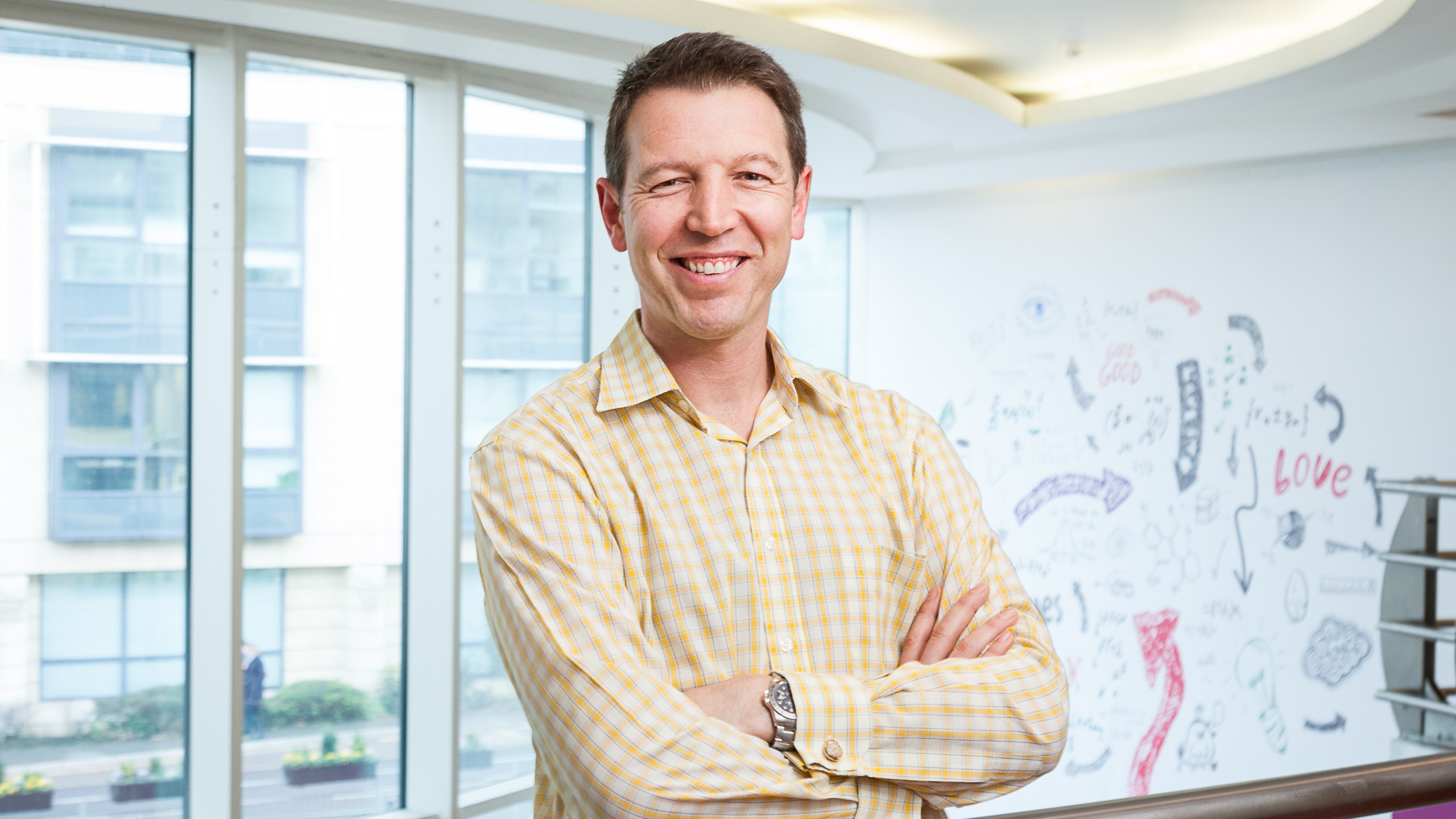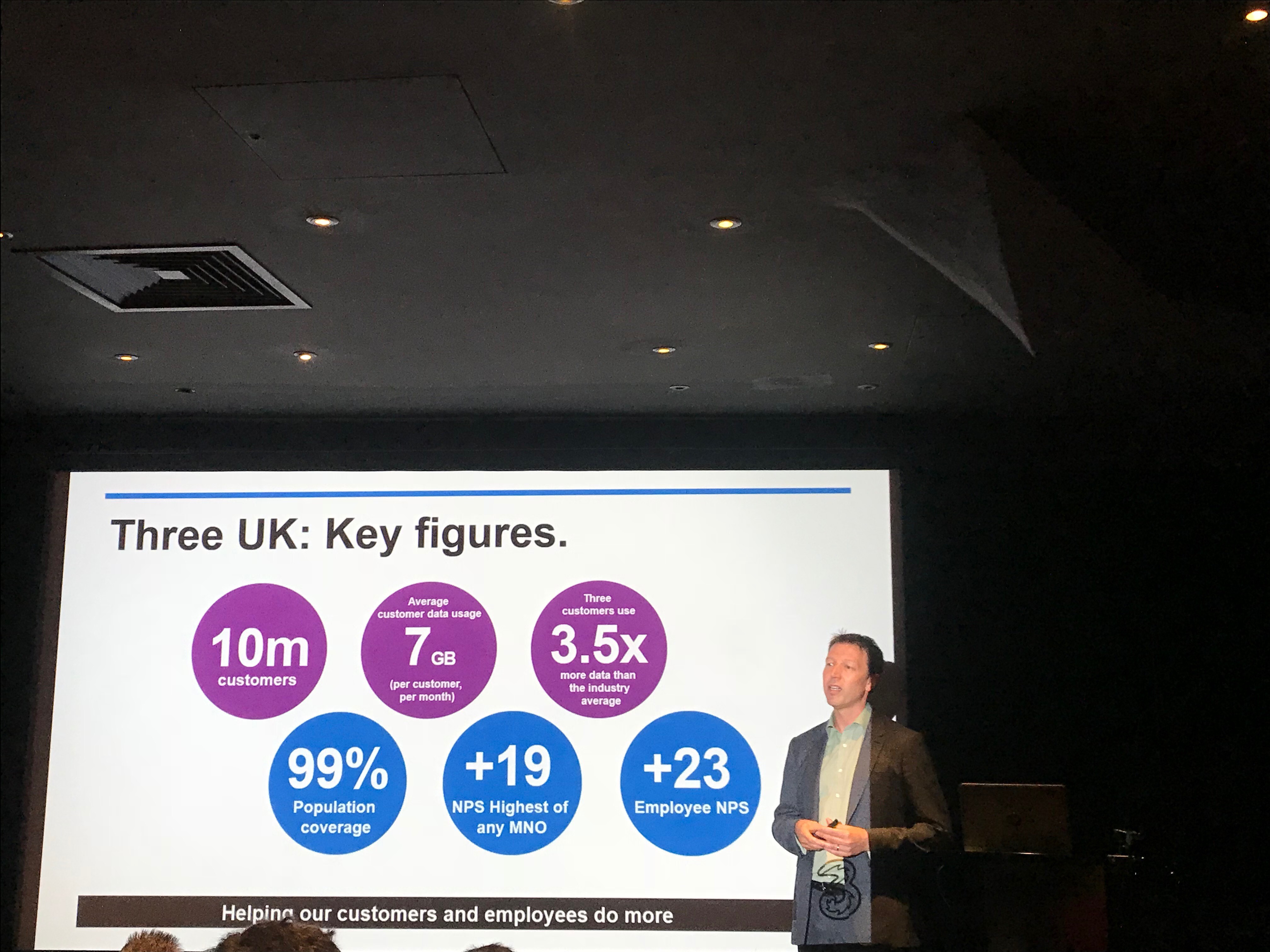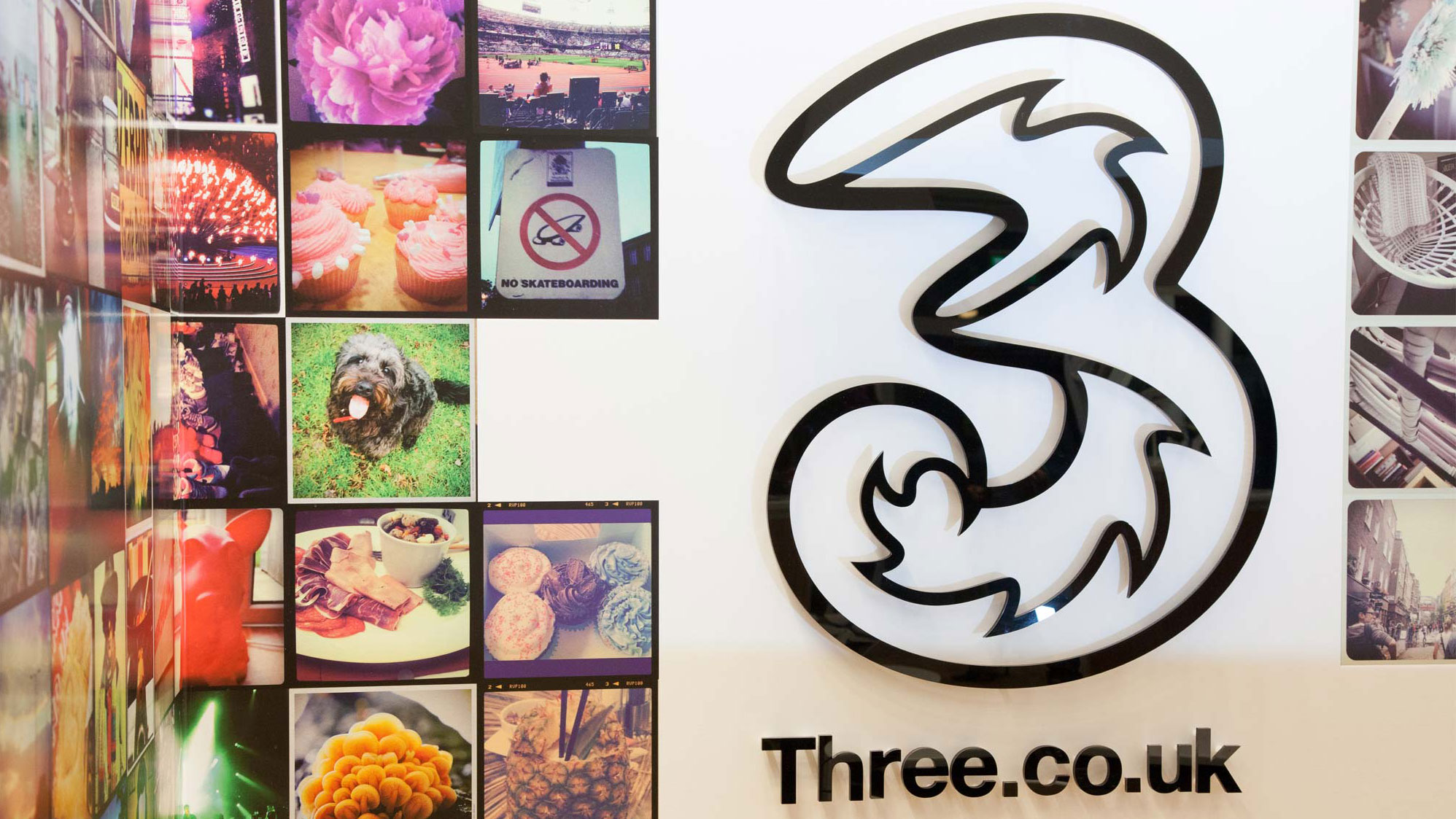Three CEO: 5G capacity is a 'big opportunity' to lead UK market
Dave Dyson says Three's spectrum holdings mean it could be the UK's 5G leader

Since its inception, Three has always been the outsider in the UK mobile market. It launched in 2003 as the UK’s ‘fifth’ major operator after Ofcom reserved spectrum for a new player in the now infamous 3G auction in 2000.
The astronomical licence fees paid meant capital for 3G infrastructure investment was difficult to find, and the lack of a ‘killer’ 3G use case meant it was even harder to justify. But with no 2G network to fall back on, Three had no choice to launch as the world’s first 3G-only operator in 2003.
The early years were difficult and Three struggled with coverage. But the arrival of mobile broadband (MBB) dongles and smartphones, pioneered by the iPhone in 2007, and a network infrastructure partnership with T-Mobile as well as disruptive unlimited tariffs gave Three the products and services it needed to compete.
Three now has 10 million customers who consume an average of 7GB of data a month – 3.5 times the industry average - while it has 99 per cent population coverage thanks to 14,500 sites and average speeds of 20Mbps. Yet it has always felt constrained by capacity.
A failed merger with O2 in 2016 raised questions about the future viability of the business, but it now sees 5G as the chance to lead the market for the first time.
5G in the UK
EE and O2 have spoken openly about their ambitions and the new services 5G will enable, while Vodafone has given details about how it feels the changes in network architecture are the truly revolutionary aspect. For Three, it’s capacity that is the key differentiator.
Three, which was the last operator to launch 4G and prefers to define its network in terms of service rather than technology, has finally spoken about its 5G plans because of a need to redress this “balance”.
Are you a pro? Subscribe to our newsletter
Sign up to the TechRadar Pro newsletter to get all the top news, opinion, features and guidance your business needs to succeed!
“I genuinely think 5G will be a more interesting and transformative technology than 4G and I think that’s why everyone’s excited,” Dyson tells TechRadar Pro. “We don’t see the need to lead in 4G. We’d prefer to keep our powder dry ahead of 5G, which is the future. Our initial focus is how we leverage the capacity gains from 5G.”
In the past, Three has been loathed to define its network in terms of technology and prefers to focus on the customer experience. It argues that its 3G network is comparable to the early EE 4G service thanks to the rollout of DC-HSPA+ technology and that the main reason for upgrading to 4G was because of the efficiencies it provided. Unlike the other operators, Three didn’t charge extra for 4G, simply treating it as a simple technical upgrade.
“Even though 4G wasn’t hugely differentiated, people were prepared to pay a premium,” he says. “Possibly because there’s a natural inclination to assume it’s different.
“Our network wasn’t where it needed to be before [4G]. We were quite successful with mobile broadband and mobile so our spectrum was quite full. Therefore we didn’t want to put any barriers up for people moving to 4G.
“There’s always a small percentage of people who care but the majority don’t care [about tech]. Most connect at home and they don’t care if its fibre or mobile.”
Although Dyson is excited about 5G, he would prefer not to market it as such. However it’s almost certain the competition will do so, meaning that if Three doesn’t follow suit then consumers might assume its network is not as advanced.
“I don’t think its right to be focusing on technology when you’re looking at the overall level of service,” he explains. “If that [practice] became prevalent then we’d have to rethink how much we focus on 5G marketing. But that wouldn’t be my first choice.”

Spectrum gains
The primary reason for Three’s optimism is its 5G spectrum holdings. Thanks to the acquisition of 1400MHz L-Band spectrum from Qualcomm and the 3.4GHz airwaves it obtained in the takeover of UK Broadband, along with the additional bandwidth it won at the recent 5G auction, Three has the most 5G-ready spectrum of any operator. This amounts to 24 per cent of total 5G spectrum available.
The decision to pre-empt the auction with the two acquisitions was because Three didn’t trust Ofcom would ensure spectrum would be made available for a fourth player at the auction. Indeed, Three was a vocal campaigner for the regulator to introduce a spectrum cap in the lead-up to the process
“Even if we don’t win any spectrum in the upcoming auction, we’re in a good place,” Dyson insists. “We’ve proved we can be broadly competitive with 4G but 5G is our big opportunity.”
- Want to know more about 5G? Check out our guide to everything you need to know...
Three’s spectrum holdings have increased fourfold since it arrived on the market and once it is all deployed could allow capacity to increase by 28 times. This means it could support 20 million customers with ten times the current rate data consumption or 200 million customers at the same rate.
By 2025, Three predicts its users will consume an average of 90GB based on its current 7GB figure.
“That’s a huge amount of growth potential,” says Dyson.

Core network enhancements
The first wave of 5G services will use the same core network as 4G, albeit with different radio technologies, and the truly revolutionary applications such as the Industrial Internet of Things (IIoT) and connected cars will arrive once operators reconfigure their networks to allow for ultra-low latency.
5G core networks will be software-defined, allowing operators to move functions closer to customers at the edge. At present, Three’s network is distributed through three main data centres. In the future, this will be done in regional hubs near major traffic areas.
Three says it’s working with Nokia on the “world’s first” virtualised core network. This will allow it to automate certain functions, scale quickly and allow for network slicing. Network slicing will be one of the major features of 5G and allows operators to portion off part of a network for a specific use case, such as emergency service traffic.
- Here's our roundup of the best home broadband deals of June 2018
Relish and home broadband
But 5G isn’t just about mobile services. Fixed Wireless Access (FWA) broadband will be one of the main early use cases, especially in the US where carriers will use millimetre Wave (mmWave) spectrum to create a genuine alternative to fixed broadband.
Last year, Three bought UK Broadband, which operates FWA services in Swindon and Central London over 3.4GHz and 3.8GHz spectrum. Customers simply plug in a router, which connects to the cellular network to create its own Wi-Fi network that behaves just the same as a traditional network.
Relish currently has 210 sites, 20,000 customers who consume an average of 88GB a month and speeds of 30Mbps.
Three initially spoke to UK Broadband about a joint-venture but ended up buying the business. This was mainly to get hold of the spectrum, but Three does have plans to offer a FWA service in the future, building on its heritage in mobile broadband.
“The growth opportunity for Relish was limited because of its footprint,” explains Dyson. “They were rich in spectrum but poor in sites, while we’re rich in sites and poor in spectrum. if you can solve the coverage challenge, you can expand that on a national basis.
“We can’t get into FWA without the right spectrum holding. [UK Broadband] has some knowledge with FWA even though its small scale. But ultimately we bought it for the spectrum because we couldn’t bank on Ofcom protecting us [with spectrum].”
He acknowledges that FWA might not be suitable for power users but can make a real difference in areas with poor fixed connectivity. There are plans to push the Relish brand a lot more in 2019 and 2020 using the same 5G network as Three and should there be any capacity issues, mmWave spectrum could be deployed, subject to it being made available by the regulator.

Three 5G launch date
Dyson admits Three’s vision of 5G isn’t that “sexy”, claiming early versions won’t be a different class to 4G and that latency will be around 40ms not 1ms. However he feels the time is right to discuss its vision given the competition has been talking up their own 5G strategies.
“It’s important that our voice is heard because ours is different to what the other operators are saying,” he says.
“I think [adoption] will be a slow burn. Things like ultra-low latency won’t be available at launch and like other technologies [it will be an iterative process]. A lot of people talk about autonomous cars, but I wouldn’t build a business case around that.
“We will start 5G trials in early 2019. I’m not necessarily keen to rush a trial out to say we’re the first. For us, it needs to be a meaningful trial to get some genuine learnings so when commercial handsets and routers are available we’re in a good position to start.
“From a core network, IT perspective you’re probably looking at the end of 2020 [for a launch]. It’s an evolving beast but that’s when it should be stable.
“For the first time in our history we have the best spectrum portfolio … We see 5G as the big opportunity and we need to be best-in-class.”
Want to find out more about 5G? Check out our dedicated 5G hub!
- Check out the best mobile deals for June 2018!
Steve McCaskill is TechRadar Pro's resident mobile industry expert, covering all aspects of the UK and global news, from operators to service providers and everything in between. He is a former editor of Silicon UK and journalist with over a decade's experience in the technology industry, writing about technology, in particular, telecoms, mobile and sports tech, sports, video games and media.